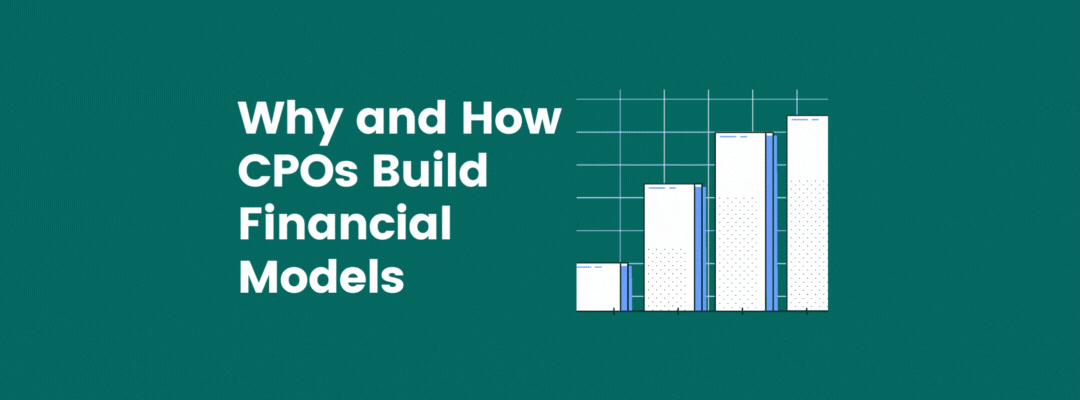Why and How CPOs Build Financial Models
Being able to build a basic financial model is a key skill that every product leader should have.
As a Chief Product Officer (CPO), your role is to drive product innovation, create new revenue streams, and generate growth for your company. To achieve these goals, it's essential to have a deep understanding of the financial impact of your product decisions. One tool that can help you achieve this is financial modelling. In this article, we'll explore why CPOs need to build financial models and provide a step-by-step guide to building them effectively.
Why CPOs Need to Build Financial Models
Building financial models can provide several benefits for CPOs, such as:
Understanding the financial impact of product decisions: By building financial models, CPOs can quantify the financial outcomes of different product decisions, such as launching a new feature or entering a new market. This can help CPOs make informed decisions that balance short-term revenue goals with long-term strategic growth.
Communicating with other stakeholders: Financial models can also help CPOs communicate with other stakeholders, including the CFO and CEO. By presenting financial projections and scenarios, CPOs can show the financial impact of their product decisions and gain buy-in from other executives.
Forecasting revenue and expenses: Financial models can help CPOs forecast revenue and expenses for their products, which can inform budgeting and resource allocation decisions.
Identifying opportunities for cost savings or revenue growth: Financial models can help CPOs identify opportunities for cost savings or revenue growth, such as optimising pricing strategies or identifying cross-selling opportunities.
To illustrate the benefits of financial modelling for CPOs, let's look at a fictional example. Imagine you are a CPO at a software company, and you are considering launching a new product feature. By building a financial model, you can project the financial outcomes of launching the new feature, such as revenue growth, customer acquisition costs, and development expenses. With this information, you can make an informed decision about whether to launch the feature, and you can communicate the financial impact of your decision to other stakeholders.
How to Build Financial Models as a CPO
Let's say that as a CPO at a software company, you are tasked with deciding whether to launch a new product feature. You know that this decision will have a significant financial impact on the company, so you decide to build a financial model to inform your decision-making.
Step 1: Define the problem or question you want to answer
In this case, the problem you want to solve is whether launching the new product feature is financially viable for the company.
Step 2: Gather data and inputs
To build your financial model, you need to gather data and inputs from various sources. These might include:
Historical sales data for the company's existing products
Estimates of the market size and demand for the new product feature
Cost estimates for developing and launching the new product feature
Projected pricing and revenue for the new product feature
Assumptions about customer retention rates and customer acquisition costs
Step 3: Identify key assumptions and drivers
Based on the data and inputs you have gathered, you need to identify the key assumptions and drivers that will influence the financial outcomes of your model. These might include:
The projected adoption rate of the new product feature
The projected pricing for the new product feature
The cost of developing and launching the new product feature
The customer retention rate for the new product feature
Step 4: Build the model in Excel or other software
Using the data, inputs, assumptions, and drivers you have identified, you can build a financial model in Excel or another software program. This model should be flexible enough to allow you to adjust the inputs and assumptions as needed, and it should be able to calculate the financial outcomes of different scenarios.
Step 5: Validate and test the model
Once you have built your financial model, you need to validate and test it to ensure that it is accurate and reliable. You can do this by comparing the model's projections to actual sales data from the company's existing products, and by testing the model's sensitivity to different inputs and assumptions.
Step 6: Use the model to inform product decisions and communicate with stakeholders
With a validated financial model in hand, you can use it to inform your product decisions and communicate with stakeholders, including the CFO and CEO. For example, you might use the model to:
Project the financial impact of launching the new product feature
Identify opportunities for cost savings or revenue growth
Quantify the risks and uncertainties associated with the new product feature
Compare the financial outcomes of different scenarios or options
Challenges and Limitations of CPO Financial Models
While financial modelling can be a powerful tool for CPOs, it is not without its challenges and limitations. For example, financial models are based on assumptions and projections, which may not always be accurate or reliable. Additionally, external factors such as market conditions or competitor behaviour may influence the financial outcomes of a product decision, but these factors may be difficult to predict or account for in a financial model.
To overcome these challenges and limitations, it's important for CPOs to:
Use multiple models or scenarios to account for different assumptions and inputs
Regularly update and validate their models with actual data and outcomes
Solicit input and feedback from other stakeholders, including finance and strategy teams
Use financial modelling as just one tool among many in their decision-making process, balancing financial considerations with other factors such as customer needs and market trends.
By being aware of these challenges and limitations, CPOs can use financial modelling more effectively to make informed product decisions and drive strategic growth.




